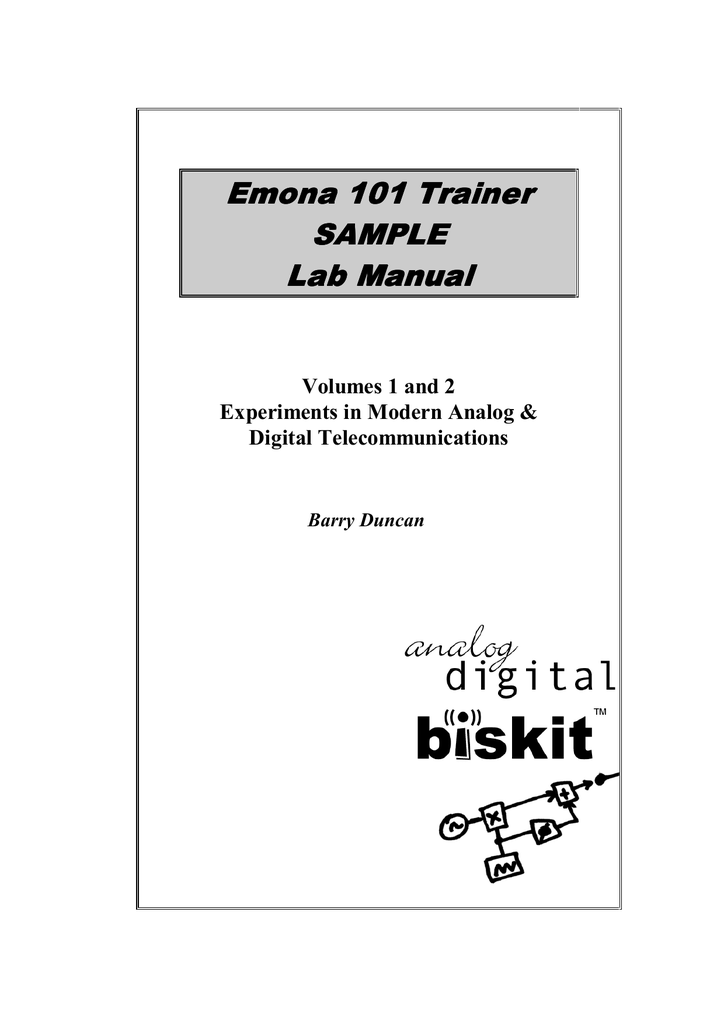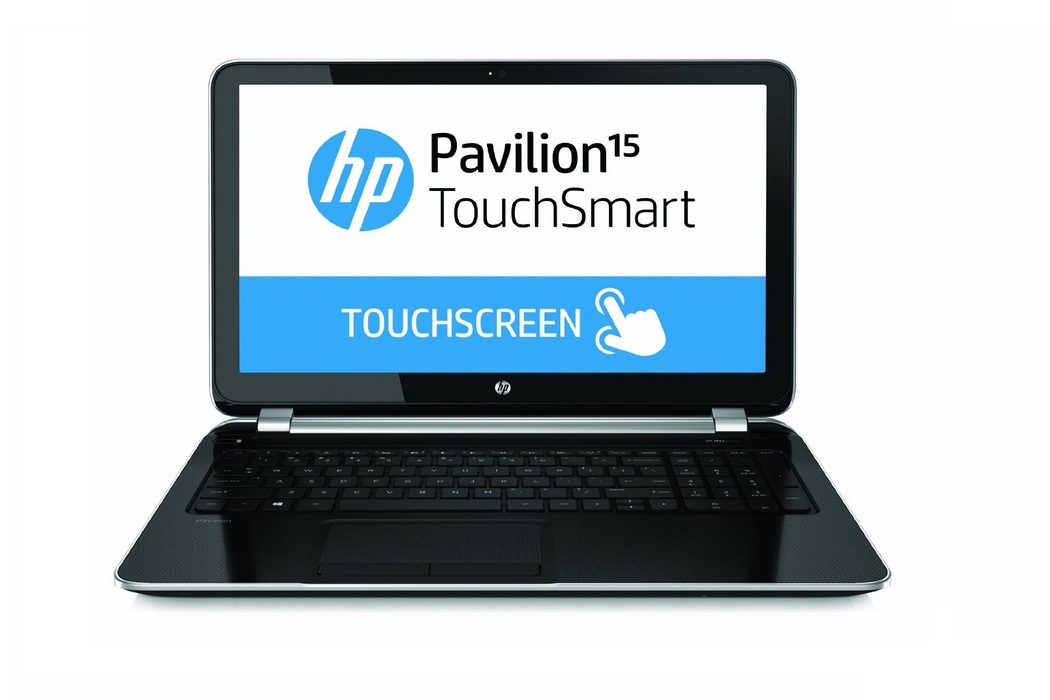Emona 101 Trainer Sample Lab Manual
BiSKIT-101
The ETT-101 accessories kit includes: 20 x stackable patch cords, User Manual, Experiments in Modern Analog and Digital Telecommunications Volume-1 and Volume-2, and a 12V plug pack. Unrivalled with a wide range of over 50 ADVANCED communications experiments in one compact trainer. Emona Volume 1 Experiments in Modern Analog & Digital Telecommunications. Emona 101 Lab Manual Experiment 8 - s2.kora.com Laboratory Manuals Emona 101 Ilbu The ETT-101 Lab Manual The ETT-101 Lab Manual Volume One, is written specifically for students enrolled in a first course in telecommunications at unviersity or a specilaist course at a vocational. Competence and level of training in techniques and procedures appropriate to level of practical work Appropriate to level of practical work; confidence in class discipline ASE., CLEAPSS., MISAC, NCBE, SSERC. (.members only) CLEAPSS Laboratory Handbook(2006), section 15.2 or Topics in Safety, 2nd edition (ASE, 1988), pp.
Good laboratory practice training manual for the trainer: a tool for training and promoting good laboratory practice (GLP) concepts in disease endemic countries - 2nd ed. 1.Laboratories - organization and administration. 2.Laboratories - handbooks. 3.Laboratories techniques and proce-dures. 5.Endemic diseases - prevention and control.
Using the expertise from many years of manufacturing telecommunications teaching equipment, Emona is now offering the Emona Telecoms-Trainer “ETT101”. The ETT-101 is designed for introductory university courses and technical college labs where telecommunication is first introduced. The ETT-101 is a low cost unit to cater to large student numbers who need to gain a ‘hands-on’ appreciation of telecoms theory at a simple, introductory level.
Building Student Knowledge in Technology is what our equipment is all about, and so the ETT- 101 is also known as ‘BISKIT’, easy to say and easy to use.
The Emona Telecoms-Trainer 101 (ETT101) is a single board trainer that makes teaching telecommunications much easier for professors in introductory university and technical college courses.
Emona 101 Trainer Sample Lab Manual 6th Edition
Completely self contained within a single, low-profile case, the ETT-101 requires only a standard 12V DC plug-pack. Waveforms can be displayed on whatever equipment is available to the student, such as: a standard lab oscilloscope, or a PC-based scope. This dynamic visual approach helps students to see the relationship between modern telecoms methods and the math. The ‘hands-on’ approach builds student confidence and makes the experiment satisfying as the students are free to explore and learn by making mistakes. When they explore more, they learn more.
View a brief
3 minutes video presentation
ETT 101
Basic Analog Communications:
AM, FM, DSB, SSB, PAM, TDM, PWM, Superheterodyne, Speech in comms, PLL, QAM, SNR CONCEPTS
Digital Communications:
PCM, PCM-TDM, ASK, BPSK, FSK, GFSK, Eye Patterns, DPSK, QPSK, Spread Spectrum, Line Coding, Delta Modulation, Noise Generation, SNR Concepts, and more
All experiments are fully documented, with questions and answer sections fully integrated into the text. Now you have a turn-key solution to teaching your communications program, with the capacity for expansion into the future. Download and print a comprehensive 4 page info sheet about the Emona Telecoms-Trainer 101.
The ETT-101 will build the student’s confidence and appreciation for math & theory
Adobe acrobat xi pro 11.0.22 serial key. The ETT-101 Laboratory Manuals (Volumes 1 and 2) provide a turn-key solution for the teacher and student alike.The manuals are specially written to guide students through hands-on experiments and help them grasp the fundamental concepts of telecommunications. Each chapter includes background information which relates the experiment content to real-world applications.
Since telecommunications text books represent the math and concepts of telecommunications theory as ‘block diagrams’, the ‘101’ Lab Manuals make extensive use of block diagrams throughout. Associated with each block diagram are detailed, step-by-step patching diagrams. Each chapter is carefully paced and constant use is made of questions to verify the student’s understanding and provide feedback to the teacher.
The ETT-101 User Manual contains brief descriptions of each block function on the unit, its specifications and operating instructions. Students only need refer to this manual upon beginning a course, after which time using the system becomes easy and intuitive.
ETT-101 LAB MANUAL – Volume 1
(20 Chapters, 310 pages)
- Setting-up an Oscilloscope
- An Introduction to the ETT-101
- Modelling Equations
- Amplitude Modulation AM
- Double Sideband DSB Modulation
- AM Demodulation
- DSB Demodulation
- SSB Modulation & Demodulation
- FM Modulation
- FM Demodulation
- Sampling & Reconstruction
- PCM Encoding
- PCM Decoding
- BW Limiting & Restoring Signals
- ASK Modulation & Demodulation
- FSK Modulation & Demodulation
- BPSK Modulation & Demodulation
- QPSK Modulation & Demodulation
- Introduction to Spread Spectrum – DSSS modulation
- Undersampling in Software Defined Radio
ETT-101 LAB MANUAL – Volume 2
(22 Chapters, 456 pages)
- AM Method 2 & Product Detection
- Noise in AM Communications
- PCM and TDM
- Armstrongs’ Phase Modulator
- Phase Division Multiplex
- Pulse-Width Modulation &Demod
- Carrier Acquisition using the PLL
- SNR and Eye Diagrams
- PCM and SNDR
- ASK Demod using Product Detect
- FSK (switching method) &Demod
- Principles of GFSK
- PN Spectra and Noise Generation
- Line Coding and Bit Clock Regen
- Delta Modulation & Demodulation
- Delta-Sigma Mod &Demod
- Observations of AM & DSBSC in the Frequency Domain
- Principles of superheterodyne
- Frequency synthesis with digital PLL
- Differential phase shift keying (DPSK)
- PAM-time division multiplexing (TDM
- Full (IQ branch) Demodulation of a QPSK Signal
- Line Code Decoding and Hard Decision Making
- DPSK Modulation and Demod with a Noisy Channel
- FM Demodulation using the Phase-Locked Loop
- Signal constellation Diagrams
Vol.3 experiments require the ETT-101-20 or ETT-101-21 add-on boards
ETT-101 FIBER OPTICS LAB MANUAL – Volume 4
(11 Chapters, 184 pages)
- An Introduction to Fiber Optic Signal Transmission and Reception
- Guiding Light Using Total Internal Reflection*
- Losses in Fiber Optic Networks*
- Polarization*
- Bending Losses in Fiber Optic Systems *
- Connectors*
- PCM-TDM ‘T1’ Implementation
- Optical Signal Filtering, Splitting & Combining**
- Fiber Optic Bi-directional Communication**
- Wave Division Multiplexing (WDM)**
- Optical Losses**
* Experiments require the ETT-101-32 Physics of Fibers Accessory Kit.
** Experiments require the ETT-101-31 Coupler and Filters board.
ETT-101-10 ELECTRONIC CIRCUITS PROJECTS MANUAL
(14 Projects, 50 pages total)
Emona 101 Trainer Sample Lab Manual Template
- An Introduction to Fiber Optic Signal Transmission and Reception
- RC Circuits
- RL Circuits
- RC & RL Low-Pass Filters
- RC High -Pass Filters
- RC & RL Filters, Cut-off Frequency
- Measuring Filter Roll-off
- Measuring Filter Phase Response
- Series & Parallel RLC B-P Filters
- RLC Band-Stop Filters
- Effect of Components on Centre Freq. of Band-Pass & Band-Stop Filters
- Effect of Component Values on Bandwidth of Band-Pass Filters
- The Hartley Oscillator
- The Colpitts Oscillator
- The Clapp Oscillator
Many Experiments in a Compact System
Completely self contained within a single, low-profile case, the ETT-101 requires only a standard 12V DC plug-pack.
The ETT-101 accessories kit includes: 20 x stackable patch cords, User Manual, Digital and Analog Basic Telecommunications Experiments Manuals Volumes-1 & 2, and a 12V plug pack.
The ETT101 is unrivalled in offering a wide range of over 42 modern communications topics that can be studied with one compact trainer. The key to the ETT101’s versatility is it’s unique block diagram approach for building experiments. By working at the block diagram level, we are able to achieve many experiments in one system.



